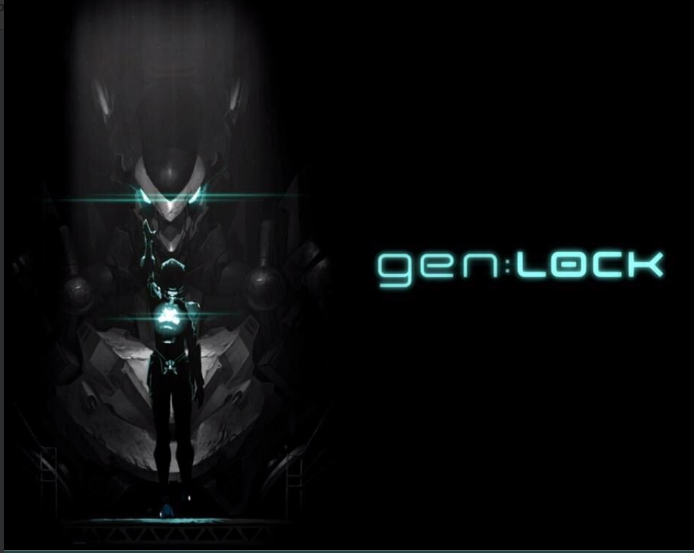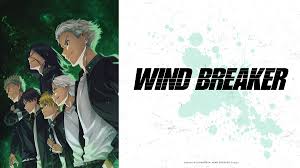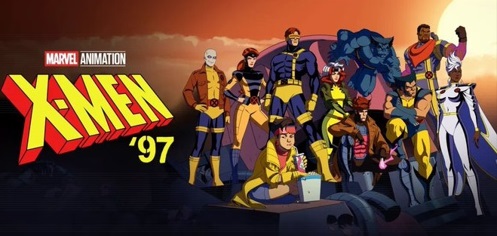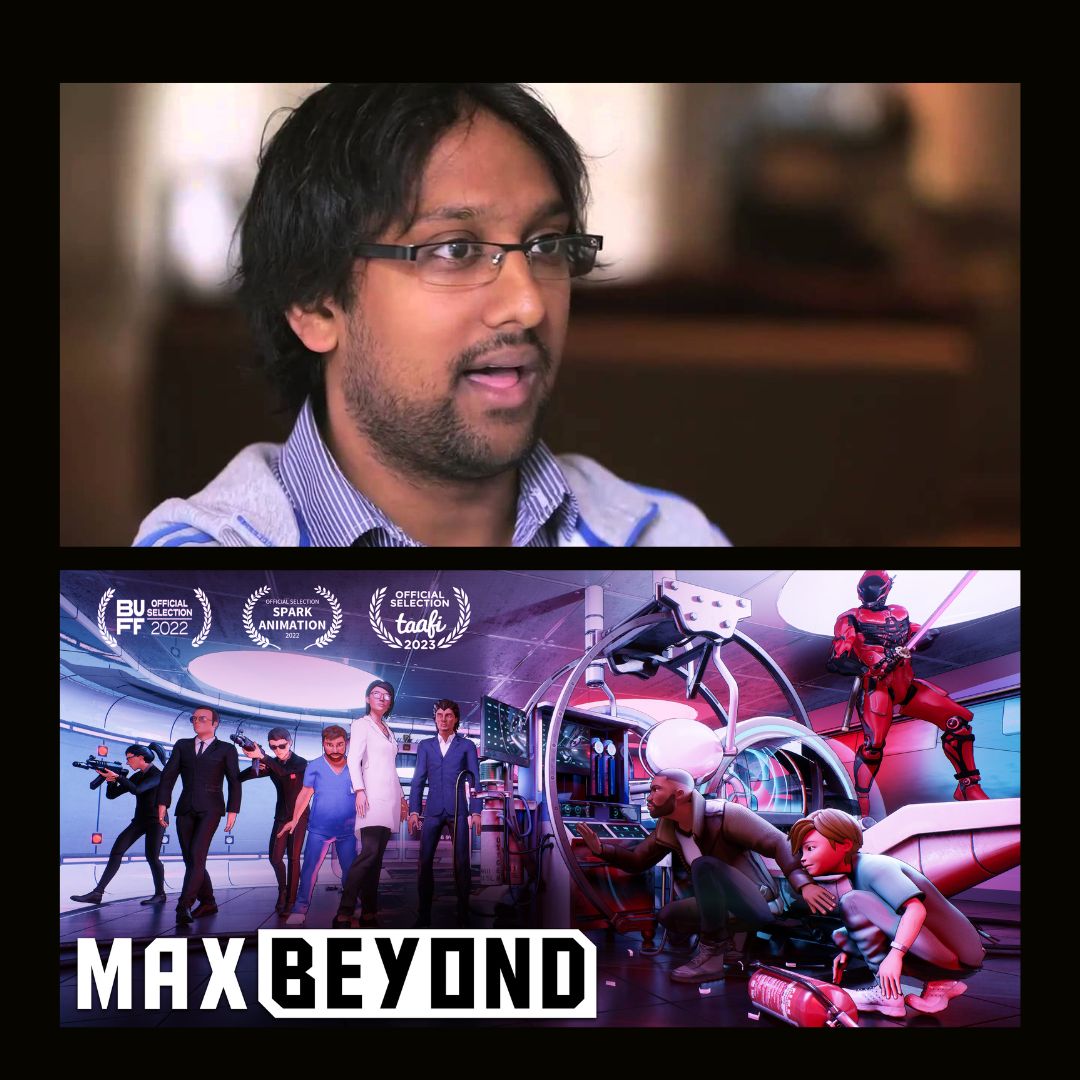Review: gen:LOCK “The Pilot”;“There’s Always Tomorrow”
Let the good times roll.
OVERVIEW (SPOILERS)
In “The Pilot”, Julien Chase (Michael B. Jordan) goes to his home in Brooklyn to introduce his girlfriend, Miranda Worth (Dakota Fanning) to his mother and sister. However, the two of them are actually only there through projection, needing to stay at the base where they are pilots for the Vanguard army. Though once they finish their visit, alarms sound as an encroaching enemy faction, the Union, makes their first move by invading the city with multiple robot spider tanks and weaponized nanotechnology that disintegrates anything it touches (aside from civilians who have sided with them). In an attempt to take down one of the biggest enemy vessels, Chase’s fighter crash lands and the Vanguard are forced to abandon all of New York.
Four years later, The Union has steadily gained ground westward, but the Vanguard continues to hold the line, even while Miranda still mourns Chase’s loss. On a mission to rescue some fleeing refugees, her team is nearly cornered by Union forces, but are saved by the surprise appearance of two cutting-edge humanoid mechs. Back at base, these are revealed to be products of the Experimental Science Unit, led by Dr. Rufus Weller (David Tennant). And the pilots are Yasmin Madrani (Golshifteh Farahani) and the seemingly deceased Chase.
In “There’s Always Tomorrow”, Dr. Weller explains the mechs, called Holons, which make use of a new technology called Gen:Lock (title drop!), of which Chase is one of only a few compatible pilots, including Madrani. Chase has recovered shortly after the battle four years ago but is literally half the man he used to be, needing a tank and life support system to stay alive. After the meeting, Chase tries reconnecting with his friends, though Miranda will need some time.
The rest of the Gen:Lock candidates arrive, including Cameron ‘Cammie’ MacCloud (Maisie Williams), Kazu Iida (Kōichi Yamadera), Valentina Romanyszyn (Asia Kate Dillon), and Robert Sinclair, who will be going through their final tests before becoming pilots. They’re soon fitted with color-coded body armor but are just as quickly surrounded by security, as a Union spy has been identified in their midst. The spy turns out to be Sinclair, or rather someone who stole Sinclair’s identity who is there to steal a Holon for the enemy and demands use of the Gen:Lock tech to access one. Weller agrees, but only to demonstrate how crucial compatibility is, as Sinclair dies painfully.
OUR TAKE:
There’s a lot to talk about with these first two episodes of this new and much-hyped show, the first of which being that the first episode already got snuck out on a stream nearly a month ago, meaning some have had time to reflect on the first half of this premiere for some time, which also might have had a hand in the decision to release the first two at once. It also helped to establish the versatility of the setting, allowing for action with both the mechs and humans and debuting the whole main cast at once. The problem is that this only leaves us with six episodes remaining to fill in other important aspects, but we’ll get to that.
The Opening Number:
Like RWBY, their other anime-esque production, gen:LOCK sports an action-packed 90-second opening credits sequence to pump up viewers at the start of every episode (with the exception of the first episode that uses it at the end). While RWBY took inspiration from shonen fighting anime, gen:LOCK naturally takes that from mecha shows like Gundam, Code Geass, Aldnoah:Zero, and so on. However, the part introducing the characters oddly gives me a Power Rangers theme vibe, which is how it became that much easier to point out that Sinclair wasn’t going to be one of the main pilots. The poster showed him without a mech, he’s the only one of them voiced by a Rooster Teeth actor, and he’s placed next to a sequence with a Union mech, so pretty much everyone aware of these before the episodes came out figured he’d be killed or evil. Turns out, it was both!
The Pilots and The Doctor:
While we do have the rest of the team assembled, most of the other pilots we meet in the second episode are pretty much all acting as confused newbies and/or mostly stoic, so there’s not much to talk about regarding them for now. But we have had enough time with a few to make some calls, particularly Chase, Mirand, and Dr. Weller.
Chase is a bit hard to read in these first two episodes, namely in comparing him from before his crash to after and how they’re so weirdly similar. I know these experiences differ from person to person, but I still find it pretty unnerving that Chase is pretty much exactly the same personality-wise despite his massive injuries and completely up-ended life. I just covered an episode of Young Justice showing the origin of their version of Cyborg, and he completely lost his shit for losing far less than Chase. And speaking from personal experience, having lost a leg to cancer, I can tell you that this kind of loss REALLY screws with you as emotionally as it does physically. So, we better be getting some development on how he managed in those four years.
Miranda being Chase’s actual girlfriend right out of the gate was a surprise to me, though it looks like it’ll be a tough road back to that now that it turns out he’s been lying to her about being alive all this time. In addition, she’s also a skilled mech pilot in her own right and has her own group she hangs with, so it’s good to know she’s not just relegated to solely being Chase’s love interest as the interviews seemed to imply.
And lastly, Dr. Weller, who I put on this list not just because he’s voiced by my third favorite actor to play The Doctor on Doctor Who, but also because he seems to actually have a distinct personality! Almost everyone else seems so stiff and impersonal, but Weller really sticks out in a good way so I’m looking forward to more of him.
Story:
The conflict seems laid pretty bare before us with that first Union attack, giving us a look at what our protagonist is leaving behind to fight this fight (something that RWBY certainly didn’t bother getting to in its own first episode). And yet, the Union itself seems rather underdeveloped as an antagonist group, especially by mecha show standards, which seem to always make a point to give both sides recognizable faces, not to necessarily humanize the bad guys but to at least show they’re human too and fighting for something. Except we don’t really know what the Union is fighting for, which makes it ambiguous what this war is supposed to be about other than stopping the enemy army. Hopefully stuff we can explore with the other three-fourths remaining in this season.
Acting:
While big-name actors like Elijah Wood and notable voice actors have made appearances in RT shows in the past, gen:LOCK is their first show linked to Screen Actors Guild, which gives them access to even bigger stars that can net even more recognition. But while none of the actors do a noticeably bad job (aside from Golshifteh Farahani as Midrani, whose line reads seem distractingly poor), everyone aside from David Tennant feels so, again, stiff. This may be growing pains of settling into their characters and even those like Jordan and Fanning who aren’t known for much of an animated filmography do a fine enough job, but I wonder if I made a mistake rewatching Black Panther and Creed before watching this because I know Jordan can do far better.
What’s in a Mech Name?:
The Holons fill in the mech requirement of this mecha show, and like Pacific Rim (the West’s other more notable interpretation of giant robot tropes), they come with their own gimmick in the form of the Gen:Lock tech. But whereas the Drift in Pacific Rim allowed for opportunities for characters to learn about each other quickly and bond even quicker, I’m unsure what character purpose the Gen:Lock provides as of now.
Also, I’m really not crazy about the name “Holon”. I know it THAT seems to be pointing to something significant, but knowing so many other shows that use motifs like angels (Gundam 00), demons (Gundam IBO), knights (Code Geass), and even just pure artillery titles, this doesn’t seem super intimidating or cool. Maybe it’ll grow on me.
Overall, a serviceable opening to this show with some clear hiccups to work out, but I’m more than eager to see where the next giant metal step will take us next.



























Hi Ashley, thank you so much for reading and we love the feedback. Note that on that day we had 14th posts go up and only ten posts show on the front page, so it's possible the preview had already been archived by the time you got to it. One recommendation would be to add our RSS feed to your favorite news aggregator service like Feedly, this way you get all of the latest posts!